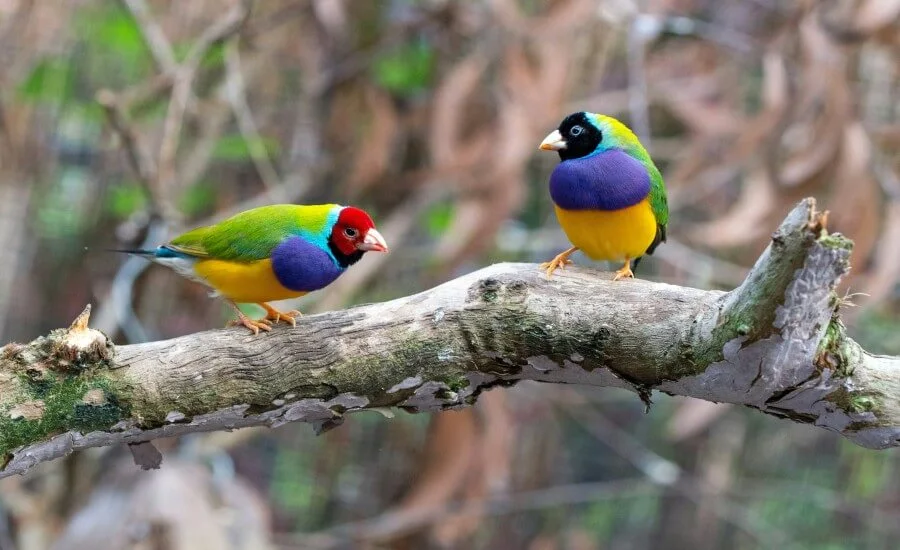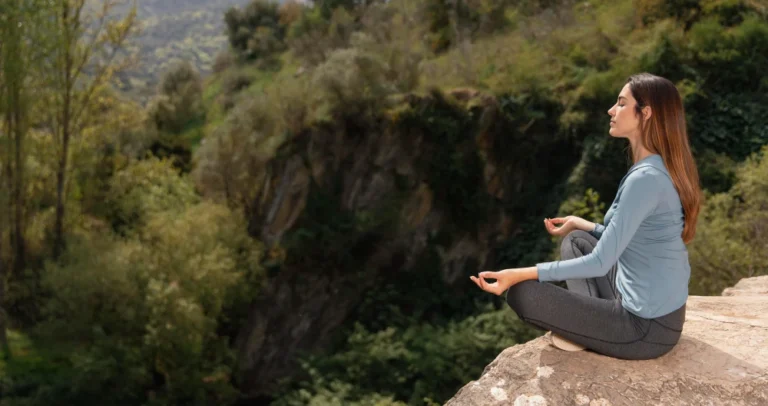
Imagine the typical vacation scene: rushing between landmarks, phone camera constantly clicking, a mental checklist driving the itinerary. Now picture this: sitting quietly by a lakeside at dawn, perhaps near Vadodara’s Wadhwana Wetland, binoculars raised, patiently waiting. Not for a grand monument, but for the subtle flash of a kingfisher’s wing or the intricate song of an unseen warbler. This is bird watching, or ‘birding’, and it’s undergoing a quiet revolution, transforming from a niche hobby into something much deeper – bird watching as the new mindful movement in travel.
Increasingly, people are discovering that observing birds offers more than just a chance to spot feathered friends; it’s a powerful practice for cultivating presence, reducing stress, and connecting deeply with the natural world, wherever their travels take them.
It’s accessible, requires minimal gear to start, and offers profound rewards for the soul. This post explores why bird watching resonates so strongly today, how it naturally fosters mindfulness, the well-documented benefits it brings, and how you can embrace this enriching practice, whether you’re exploring distant lands or simply your own backyard.
Beyond the Binoculars: What is Mindful Bird Watching?

Mindful bird watching isn’t just about identifying species or adding sightings to a life list (though that can be part of the fun!). It’s about shifting the focus from achieving to experiencing. It means bringing full, non-judgmental awareness to the act of observing birds and their environment. This involves engaging all your senses, cultivating patience, and embracing the present moment, regardless of what birds appear – or don’t.
Instead of solely focusing on finding a specific ‘target’ bird, the mindful birder pays attention to:
- Visual Details: The subtle patterns on a feather, the way a bird moves, its interactions with its surroundings, the play of light on its plumage.
- Auditory Landscape: Tuning into the complex symphony of birdsong, differentiating calls, noticing the silence between sounds, hearing the rustle of leaves indicating movement.
- Behavioral Nuances: Observing how birds forage, preen, build nests, interact with each other, or react to their environment (understanding ‘bird language’).
- The Wider Environment: Noticing the habitat, the weather, the plants, the insects – the entire ecosystem the bird is part of.
- Internal Awareness: Observing your own thoughts, feelings, and bodily sensations as you watch – curiosity, excitement, peace, impatience – without getting carried away by them.
It’s about slowing down, letting go of expectations, and fostering a sense of wonder and connection with the natural world unfolding before you. As Liz, a coordinator for a mindful birding group quoted by BirdLife Australia, explains, mindful birding is “turning our attention to birds and nature for self-care. It’s being present without judgment in order to allow an experience of ‘what will be’.”
The Tweet Smell of Presence: Why Bird Watching Cultivates Mindfulness

Why does looking for birds have such a profound effect on our state of mind? Bird watching naturally incorporates several core principles of mindfulness practice, making it an accessible gateway to presence for many.
- Demands Focused Attention: Spotting birds, especially small or camouflaged ones, requires intense concentration. You must actively scan, listen, and observe details, pulling your focus away from distracting thoughts.
- Engages the Senses: Birding is a multi-sensory activity. You rely heavily on sight (spotting movement, color, shape) and sound (identifying calls, locating birds). This sensory engagement anchors you firmly in the present moment and your immediate environment.
- Requires Patience and Stillness: Birds are often wary. Successful observation usually requires moving slowly, sitting quietly, and waiting patiently. This deliberate slowing down counteracts our culture’s obsession with speed and instant gratification.
- Fosters Connection with Nature: Bird watching inherently draws you outdoors and connects you to natural rhythms – the timing of migrations, daily foraging patterns, seasonal changes in plumage or song. This connection has proven therapeutic benefits.
- Cultivates Awe and Wonder: Witnessing the beauty of a bird’s flight, the intricacy of its song, or a rare sighting can evoke powerful feelings of awe. Experiencing awe is linked to increased positive emotions, humility, and a greater sense of connection to something larger than oneself.
- Interrupts Rumination: As neuropsychologist Dr. Luke Smith explains, paying attention through mindfulness deactivates the brain’s ‘default mode network’, which is linked to mind-wandering, worry, and lower mood. Focusing on birds literally gives your worrying mind a break.
Essentially, bird watching provides natural anchors for attention (sight, sound) and encourages the patience and stillness needed for mindful awareness to flourish.
Taking Flight from Stress: The Wellbeing Benefits of Birding

The connection between bird watching and wellbeing isn’t just anecdotal; it’s increasingly backed by scientific research. Engaging with birds offers tangible benefits for mental and physical health:
- Stress and Anxiety Reduction: Studies, including work from King’s College London, show that even everyday encounters with birds significantly improve mental wellbeing and that these effects can last for hours. The calming act of observation and time spent in nature lowers stress hormones.
- Improved Mood & Reduced Depression: The King’s College study also found positive effects even for individuals diagnosed with depression. Listening to birdsong, specifically, has been linked to improved mood (while traffic noise has the opposite effect).
- Enhanced Focus and Attention Restoration: Research published in the Journal of Environmental Psychology found that birdsong helped restore attention. The focused observation required in birding likely strengthens cognitive control.
- Increased Connection to Nature: Bird watching fosters a deeper appreciation for biodiversity and ecosystems, which itself is linked to greater psychological wellbeing. It encourages us to notice and value the natural world around us.
- Gentle Physical Activity: While not always strenuous, birding often involves walking or hiking, encouraging low-impact physical activity which benefits cardiovascular health and overall fitness.
- Sense of Accomplishment & Joy: Successfully identifying a bird or simply enjoying a beautiful sighting provides moments of pure joy and satisfaction. It’s a rewarding pursuit that offers continuous learning opportunities.
Bird watching acts as a form of nature therapy, accessible and effective for promoting a calmer, more focused, and more connected state of being.
Wings Across the World (and Your Backyard): Mindful Bird Watching While Traveling

One of the greatest beauties of bird watching is its accessibility. You don’t need to travel to remote jungles (though you certainly can!). Mindful bird watching is the new movement in travel partly because it can be integrated into almost any trip, or even practiced right at home.
- Dedicated Birding Trips: Enthusiasts might plan entire trips around visiting birding hotspots during migration seasons or seeking specific species. India, with its incredible biodiversity, offers prime locations like Keoladeo National Park (Bharatpur), the Himalayas, the Western Ghats, and numerous sanctuaries.
- Incidental Birding: Simply pack your binoculars (or just use your eyes and ears!) on any vacation. Take a mindful morning walk in the hotel gardens, spend time observing birds in a city park (like Sayaji Baug in Vadodara), or notice the avian life during a hike or beach visit. Even common birds offer fascinating behaviour when observed closely.
- Urban Birding: Cities are often surprisingly rich in birdlife. Parks, waterfronts, university campuses (like MSU in Vadodara), and even small green spaces can host diverse species adapted to urban environments.
- Local Exploration: Discover birding spots near your home. For residents of Vadodara, nearby treasures include Wadhwana Wetland (a Ramsar site excellent for winter water birds), Thol Lake Bird Sanctuary, and Nalsarovar Bird Sanctuary (both famous for flamingos and migratory birds, within a couple of hours’ drive). Even local lakes like Timbi or Ankodiya offer rewarding sightings according to eBird data.
The key is shifting your awareness. Instead of tuning out the background chirps, consciously tune in. Bring mindful attention to the birds sharing the space, wherever you are. This simple shift can add a rich, grounding layer to any travel experience.
Getting Started: Tips for the Budding Mindful Birder Traveler

Intrigued? Getting started with mindful bird watching is easy and requires very little initial investment.
- Start with Your Senses: Before even thinking about gear, simply start paying more attention. Notice birds in your garden, park, or street. Listen to their sounds. Observe their movements.
- Get Basic Binoculars: While not strictly essential for mindful observation, binoculars significantly enhance the experience by bringing birds closer. You don’t need top-of-the-line models initially. A decent pair in the $200-$300 range (e.g., 8×42 magnification) offers a huge improvement over cheaper options and will last years. Look for reviews on sites like All About Birds.
- Use a Field Guide or App: To help identify what you’re seeing (which deepens appreciation), get a field guide specific to your region (e.g., “Birds of the Indian Subcontinent”). Alternatively, free apps like Merlin Bird ID (from Cornell Lab of Ornithology) are incredibly powerful, helping identify birds by sight or sound. eBird is great for finding local hotspots and logging sightings.
- Find Local Spots: Use eBird’s ‘Explore’ feature or local birding group recommendations to find good places nearby (like the Vadodara spots mentioned earlier). Start with accessible parks or wetlands.
- Go Early: Birds are often most active in the early morning.
- Be Patient & Still: Find a comfortable spot and wait quietly. Or walk slowly and pause often. Let the birds come to you or get accustomed to your presence.
- Focus on Observation, Not Just ID: Notice behaviour, colours, sounds, and your own feelings, not just the name of the bird.
- Practice Birding Ethics: Maintain a respectful distance, avoid disturbing nests, minimize noise, stay on paths, and respect habitats.
- Keep a Simple Journal (Optional): Note down observations, sketches, or reflections on your experience.
The most important ‘gear’ is patience and curiosity.
Common Concerns & Solutions

Newcomers to bird watching might have a few hesitations:
- Concern: “I need expensive binoculars and cameras.”
- Solution: Not true to start! Your eyes and ears are your primary tools for mindful birding. A decent entry-level binocular is helpful but not essential initially. Expensive cameras are entirely optional. Focus on the experience, not gear acquisition.
- Concern: “I don’t know anything about birds! I won’t be able to identify them.”
- Solution: That’s okay! Mindful birding isn’t primarily about identification. Focus on observing behavior, color, shape, and sound. Use apps like Merlin Bird ID to help you learn common local birds gradually. The joy is in the noticing, not just the naming.
- Concern: “What if I go out and don’t see any ‘interesting’ birds?”
- Solution: Let go of expectations. Mindful birding appreciates whatever shows up – even common pigeons or crows exhibit fascinating behaviors when watched closely. If birds are scarce, focus your mindfulness on the landscape, the weather, the plants, or your own inner state. The practice is the presence itself.
- Concern: “I don’t have the patience to sit still and wait.”
- Solution: Bird watching is excellent patience practice! Start with short sessions (10-15 minutes). Try mindful walking birding instead of just sitting. Notice the impatience itself without judgment, and gently redirect your focus back to observing.
Mindful Birding Starter Checklist

Ready for your first mindful birding outing? Keep it simple:
- Choose a Time & Place: Early morning is often best. Pick a local park, garden, lake, or even your own backyard.
- Set an Intention: e.g., “To be present with whatever birds I encounter,” or “To focus on listening.”
- Minimize Distractions: Leave phone on silent/put it away.
- Basic Gear (Optional but helpful): Binoculars (if you have them), simple notebook & pen (optional), water bottle.
- Comfortable Clothes/Shoes: Dress for the weather, choose colors that blend in.
- Find a Spot or Walk Slowly: Sit quietly or move mindfully.
- Engage Senses: Look, listen, feel the environment.
- Practice Patience & Non-Judgment: Observe what unfolds without expectation.
- Short Reflection: Take a moment afterwards to notice how you feel.
Conclusion: Finding Stillness in the Flutter of Wings

In a world clamoring for our attention, bird watching offers a gentle yet powerful anchor to the present moment. Its rise as a mindful movement in travel reflects a collective yearning for slower, deeper, more connected experiences.
By simply observing the birds around us – whether in a remote wilderness, a bustling city park like Sayaji Baug, or a nearby wetland like Wadhwana – we engage in a practice that calms the mind, sharpens the senses, reduces stress, and fosters a profound appreciation for the intricate beauty of the natural world.
invites us to look up from our screens and tune into the subtle symphony of life unfolding constantly around us. It requires patience, rewards stillness, and cultivates a sense of wonder that can enrich any journey, near or far. You don’t need to be an expert or own expensive equipment to begin.
On your next walk, trip, or even just looking out your window, pause. Listen. Look closely. Notice the birds. Allow yourself a moment of mindful connection. You might be surprised by the peace and perspective that takes flight within you.






